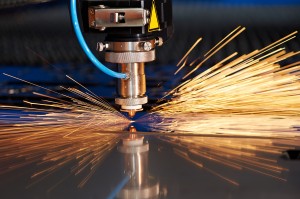Apple Inc. (NASDAQ:AAPL) has apparently found a way around the technical hurdles of mass producing sapphire displays for its iPhone and other electronics, according to a report issued today. One of the major advantages to sapphire, a form of corundum, is that it has a hardness of 9 on the Mohs hardness scale. This makes it harder than steel, and thus immune to scratches from car keys, pen knives, and other items that may share a pocket with an iPhone. However, it also makes working the substance very difficult, helping to account for its high cost and low production volume. Apple, however, means to change all that – starting, basically, right now.
Apple Inc. (AAPL) recently build a colossal sapphire manufacturing plant in Mesa, Arizona. This facility has made headlines due both to its scale and the speed at which planning and construction have proceeded. GT Advanced Technologies (GTAT), an Apple ally, will be the firm to actually run the factory, producing sapphire display screens which will then be united with other components made in Asia to create finished iPhones, iPads, and possibly iWatches. The new manufacturing facility is likely to more than double the entire planet’s current capacity for making artificial sapphire.
 Today’s revelations show exactly how Apple intends to make the stubbornly hard material cost effective and quick to produce. Cutting will be achieved via a microsecond fiber laser, which may cut each display with a single pass or multiple passes, depending on what proves to be most practical in actual production. The USPTO published two patent applications today, which, when taken together, give an essentially complete picture of the Cupertino firm’s sapphire manufacturing method.
Today’s revelations show exactly how Apple intends to make the stubbornly hard material cost effective and quick to produce. Cutting will be achieved via a microsecond fiber laser, which may cut each display with a single pass or multiple passes, depending on what proves to be most practical in actual production. The USPTO published two patent applications today, which, when taken together, give an essentially complete picture of the Cupertino firm’s sapphire manufacturing method.
Using physical cutters is time-consuming and very expensive, due to the fact that the extremely hard sapphire quickly wears out even the toughest cutting discs. Laser cutting has been inefficient up to this time because the sapphire tends to reflect the laser light and greatly reduce its efficiency. Apple Inc.’s (AAPL) new method is to use chemical etching to roughen the surface along the line where cutting is to occur, greatly reducing its reflectivity. A microsecond fiber laser can then be used to efficiently slice through, with excess material removed by jets of pressurized nitrogen or, perhaps, simple air.
This process will make cutting sapphire far cheaper and quicker than has been possible up to this point. Cutting sapphire cheaply has been the stumbling block which has prevented wider adoption of the material despite its scratch resistance and other useful properties. If Apple (AAPL) has indeed conquered this difficulty and devised a way to quickly and efficiently produce sapphire displays of practically any size, then non-scratch display surface can be expected to multiply in the near future.



